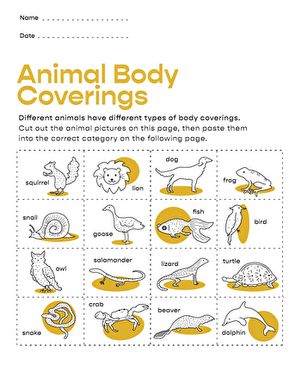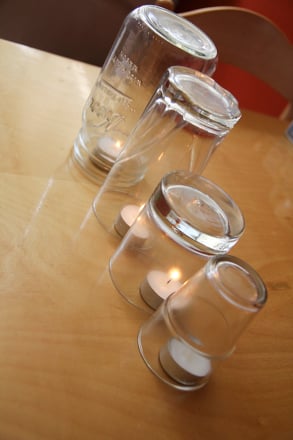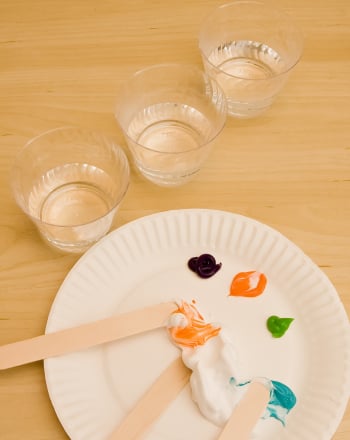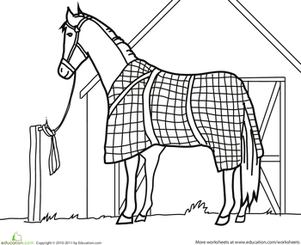Science project
Insulation Experiment: Keep Your Body Warm
Ever wonder why your mom makes you wear two or three layers of clothing when you want to go outside and build a snowman? These clothes are actually great insulators, which mean they're made from materials that keep your body temperature from dropping. In this insulation experiment, you'll learn which fabrics help keep you warm on an icy winter day.
Some weather conditions, such as rain, wind, and snow cause our bodies to lose heat. If you don't select the right materials to keep your body warm and toasty, you'll start to shiver from the cold. Wearing warm, insulating clothes allows you to stay outside even longer, having snowball fights with your friends, creating snow angels, and building igloos to play in.
Problem:
Which type of fabric insulates heat the best?
Materials:
- 7 glasses of the same size and shape
- Water
- Thermometer
- Wool
- Cotton
- Denim
- Lace
- Fleece
- Nylon
- Kitchen timer
- Notebook and pencil
Procedure:
- Before diving into the directions, think about the kinds of clothes you usually wear on a hot day: Are the fabrics heavy or light? What colors keep you cool? What colors make you feel warm? Jot down any notes in your notebook.
- Gather together a variety of fabrics. Wool, cotton, denim, lace, fleece, and nylon are all good choices.
- Look at the fabrics you'll be testing. Which fabric do you think will best keep the water temperature from dropping? List your guess, which is called a hypothesis, in your notebook.
- Place one glass on the table for each fabric that you plan to test. Add an extra glass to be used as your control for the experiment. This glass will get water of the same temperature as the other glasses, but won't be wrapped in a fabric.
- Fill each glass with water that reads 98.6 degrees Fahrenheit when a thermometer is inserted in it. Younger children who can't read a manual thermometer should be given a digital thermometer.
- Wrap each glass with a different fabric as if you were dressing one of your stuffed animals, leaving the last glass uncovered.
- Wait a total of 15 minutes. Kitchen timers are great for kids to use to count down the time.
- Using the thermometer, test the temperature in each glass.
- Record the results in your notebook. Make sure you can answer the following questions: Did any of the fabrics used around the glasses increase the water temperature? Did any of the fabrics used around the glasses decrease the temperature of the water? Did any of the glasses hold a 98.6 degree Fahrenheit temperature throughout the experiment?
Results:
Fabrics like wool and fleece are great insulators and will keep your body warm over an extended period of time. On the reverse side, fabrics like lace and cotton don't hold heat well, and won't keep your body warm very long.
Why?
To insulate something means to use a material that allows the least amount of heat to escape. Wool fibers are woven tightly together, and are much thicker than other materials, such as cotton. They don't allow much heat to escape, which means they are great insulators. Fabrics like cotton and lace are breathable fabrics, meaning they allow a great deal of heat to escape. They may be comfortable to wear, but they won't keep you from turning into an icicle on a cold day.
Now that you know which fabrics keep water warm the best, try another insulation experiment to see how different colors are able to absorb heat and keep your water warm. Stick with the same fabric throughout the experiment, like cotton, but use a different color on each glass. You'll want some dark colors and some light. Shine a lamp without it's shade in front of the glasses of water. Wait 15 minutes and then check the temperatures. Did you notice that the darker colored fabrics kept the glasses warmer? This is because dark colors actually absorb more heat than lighter colored fabrics.
Education.com provides the Science Fair Project Ideas for informational purposes only. Education.com does not make any guarantee or representation regarding the Science Fair Project Ideas and is not responsible or liable for any loss or damage, directly or indirectly, caused by your use of such information. By accessing the Science Fair Project Ideas, you waive and renounce any claims against Education.com that arise thereof. In addition, your access to Education.com's website and Science Fair Project Ideas is covered by Education.com's Privacy Policy and site Terms of Use, which include limitations on Education.com's liability.
Warning is hereby given that not all Project Ideas are appropriate for all individuals or in all circumstances. Implementation of any Science Project Idea should be undertaken only in appropriate settings and with appropriate parental or other supervision. Reading and following the safety precautions of all materials used in a project is the sole responsibility of each individual. For further information, consult your state's handbook of Science Safety.













